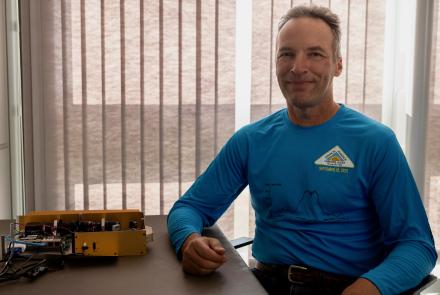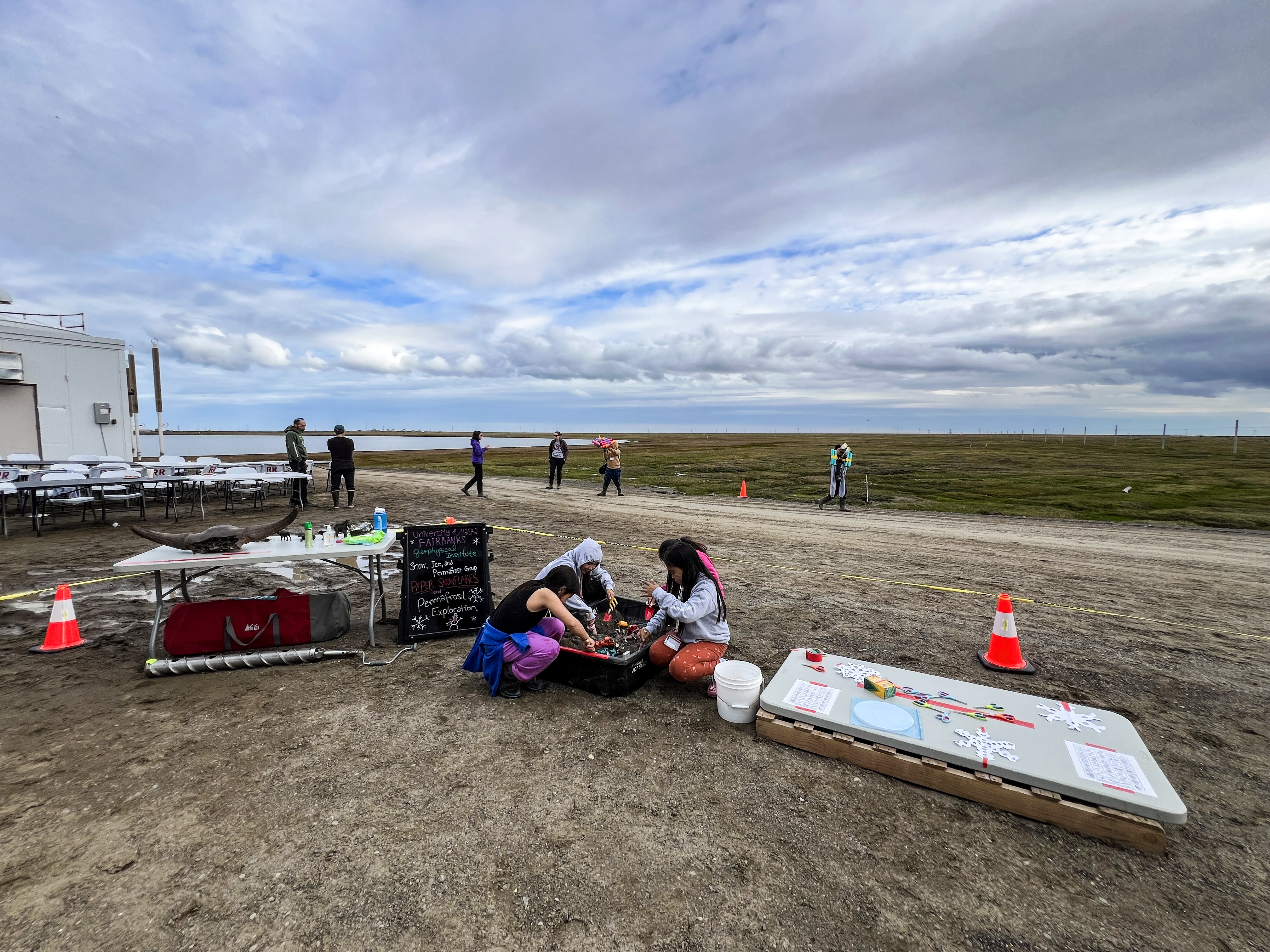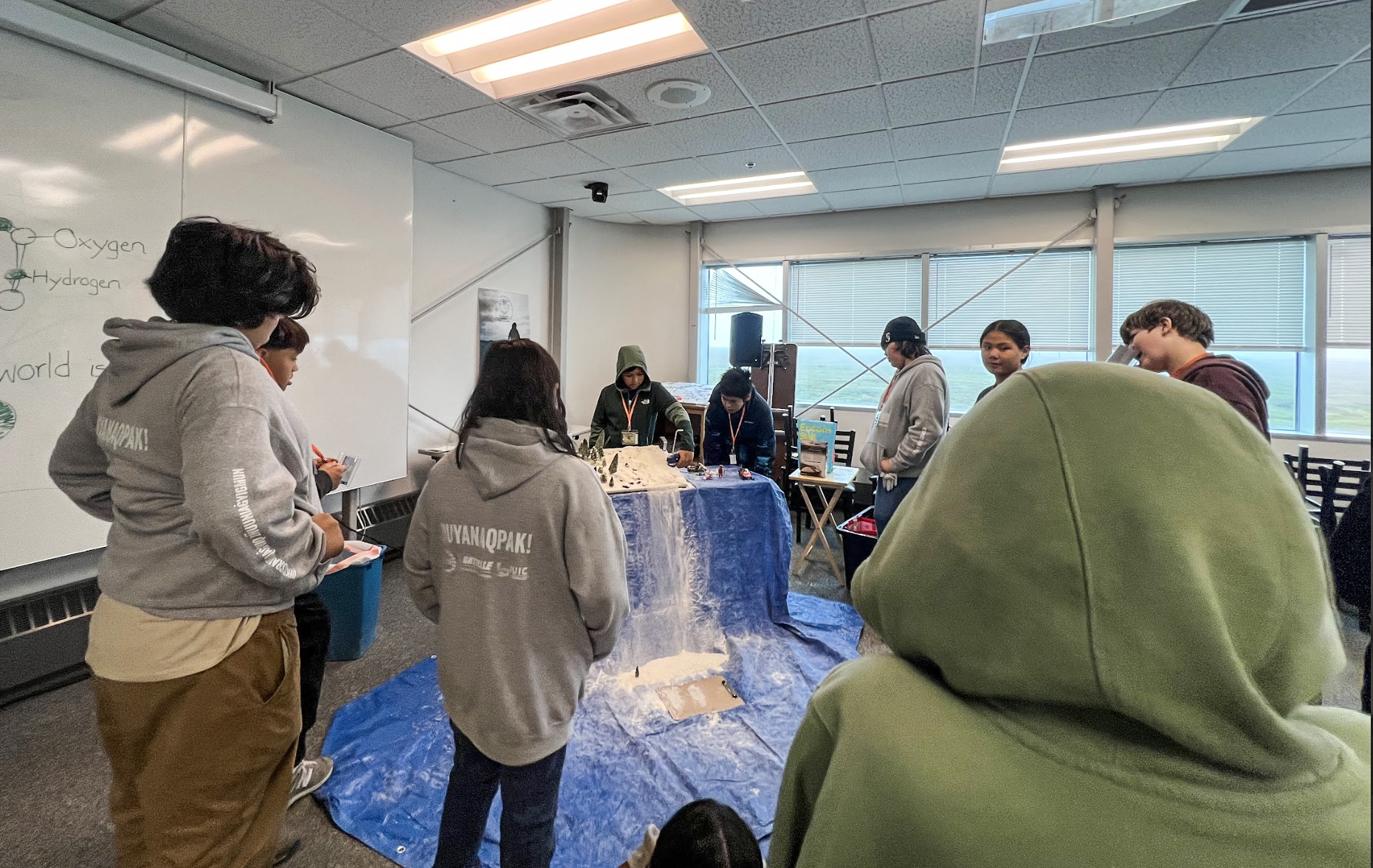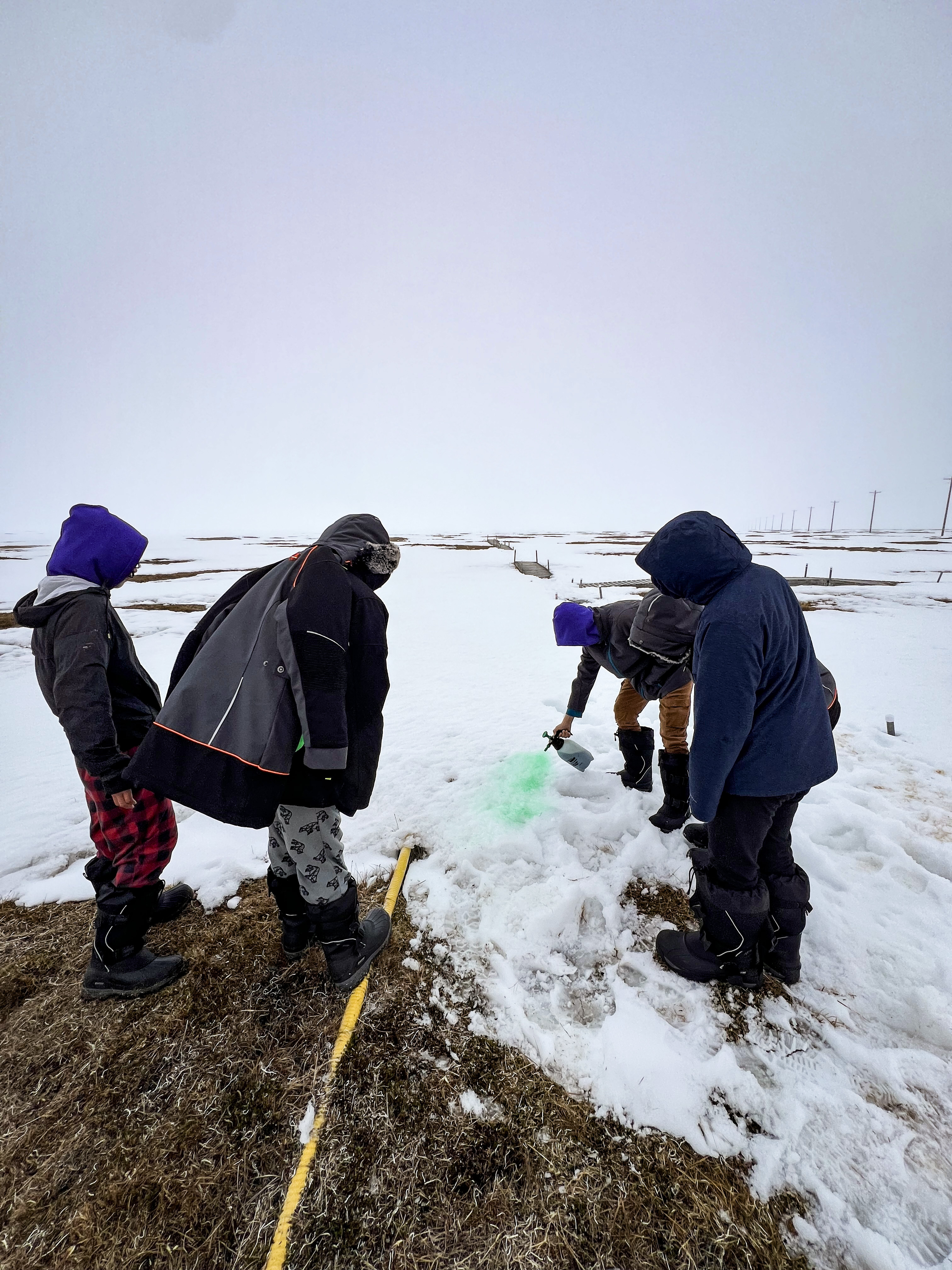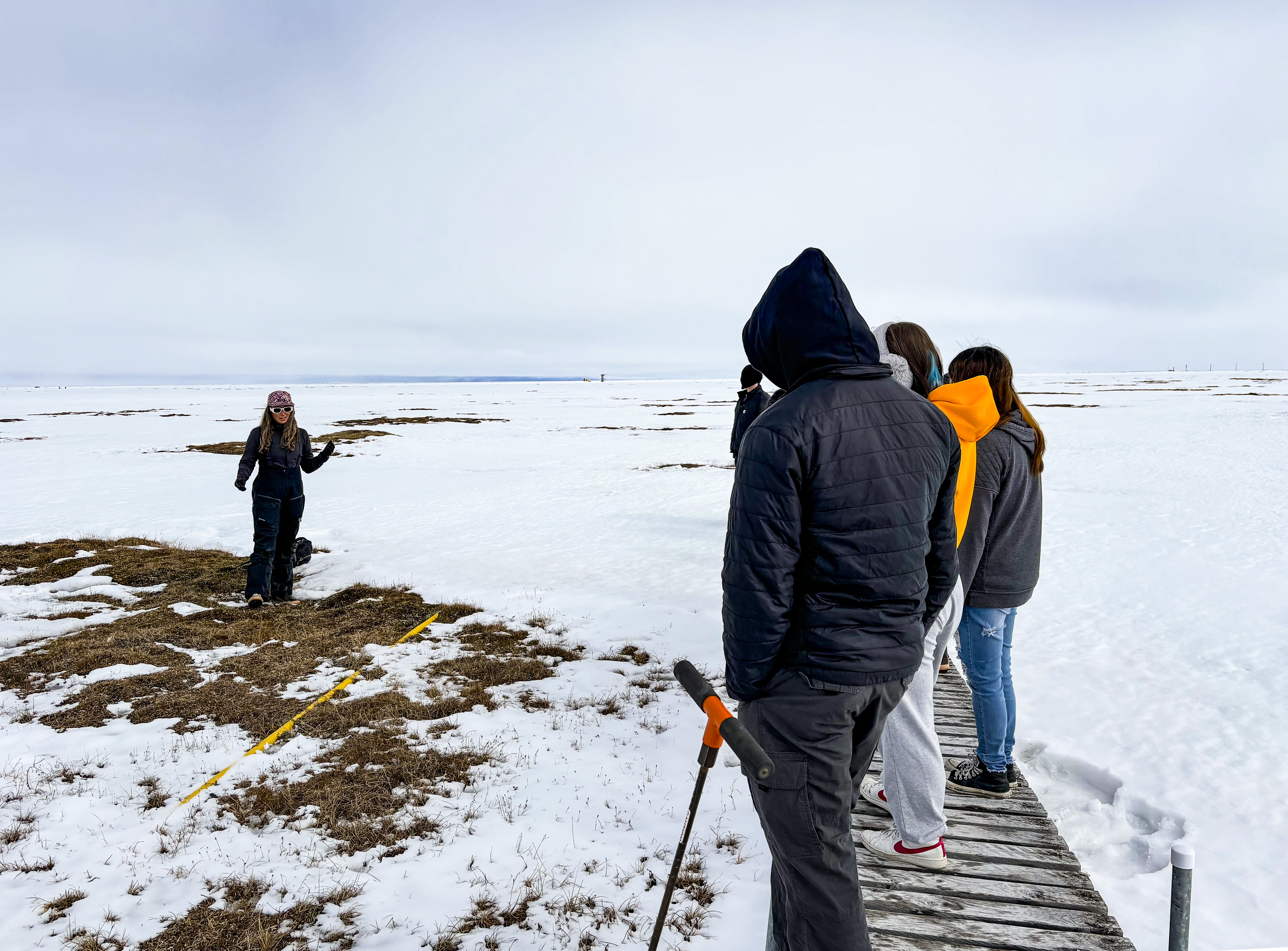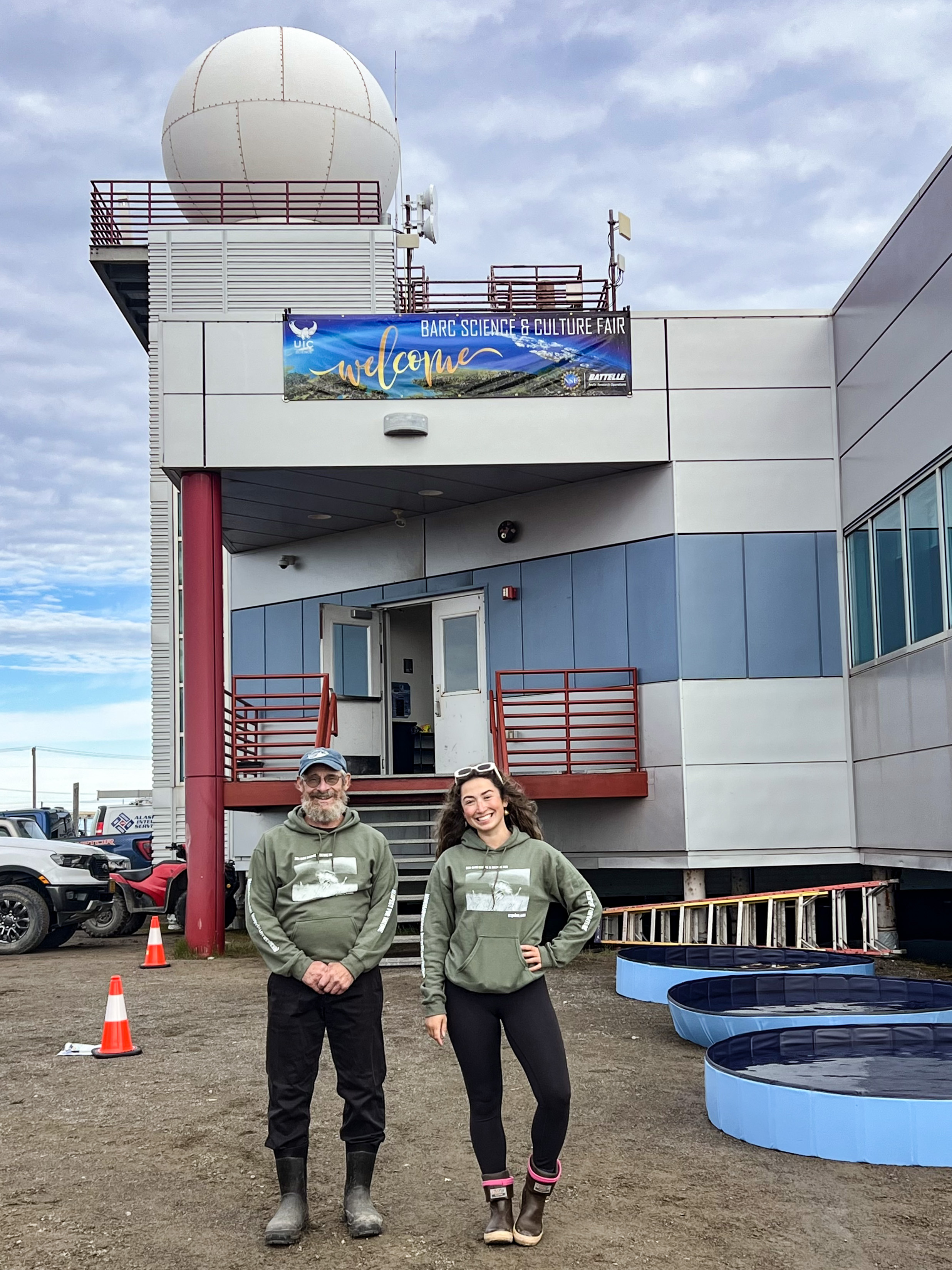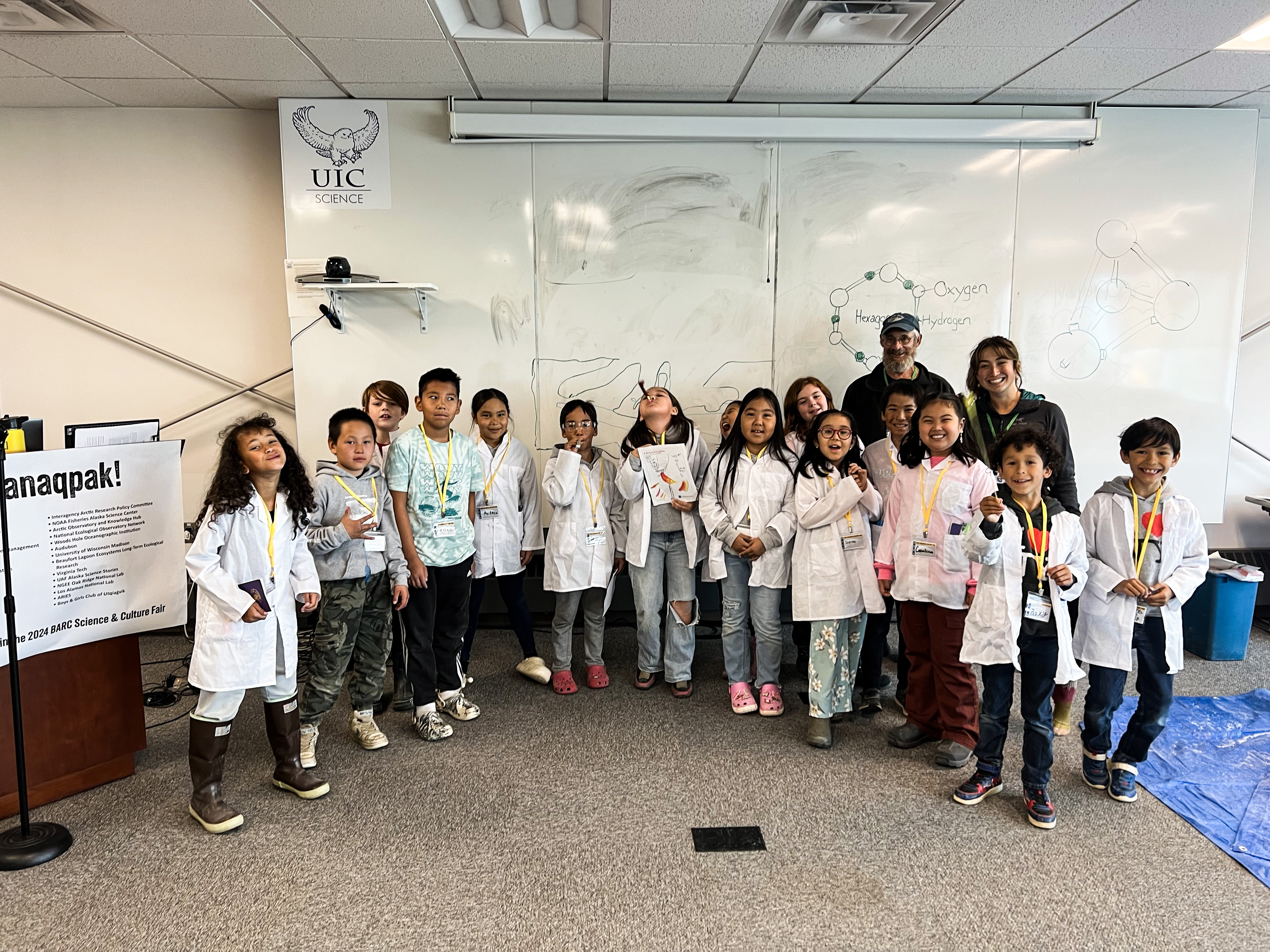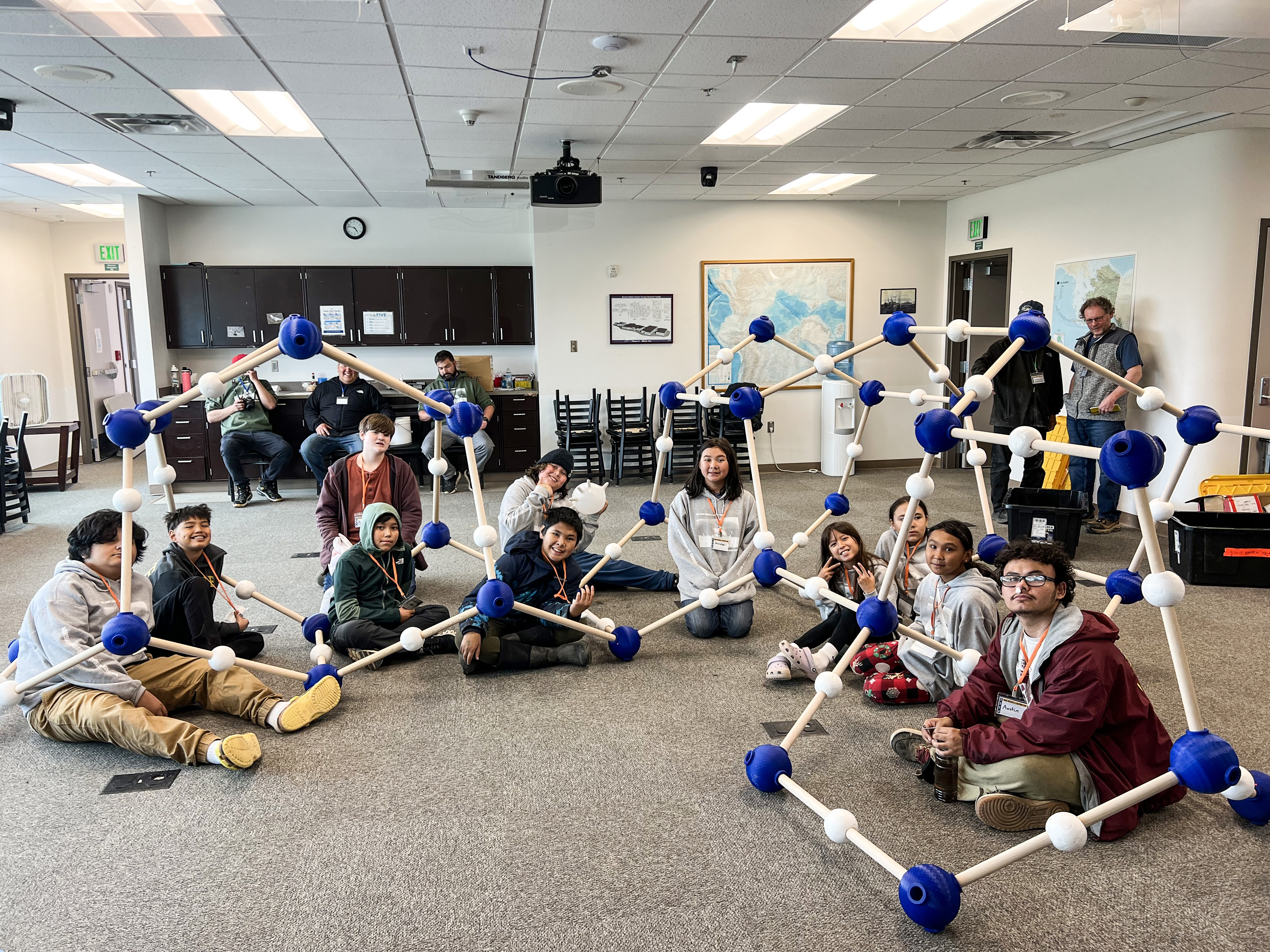
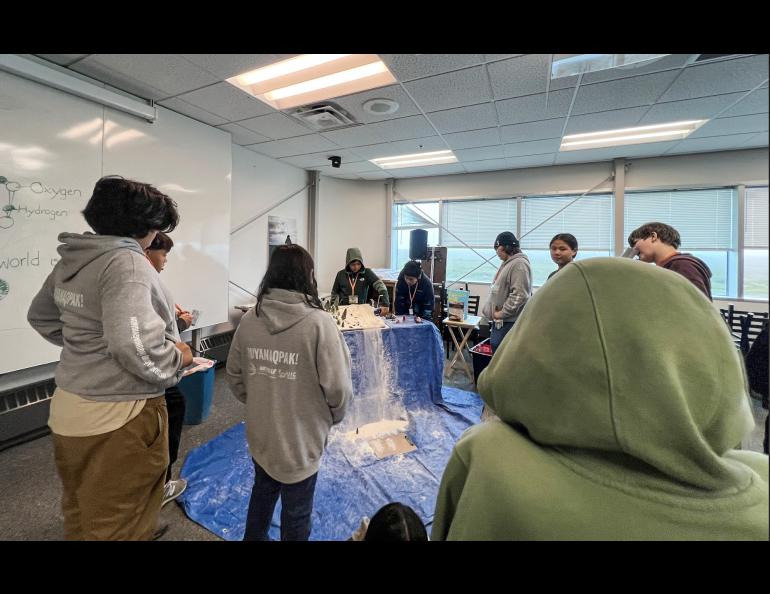
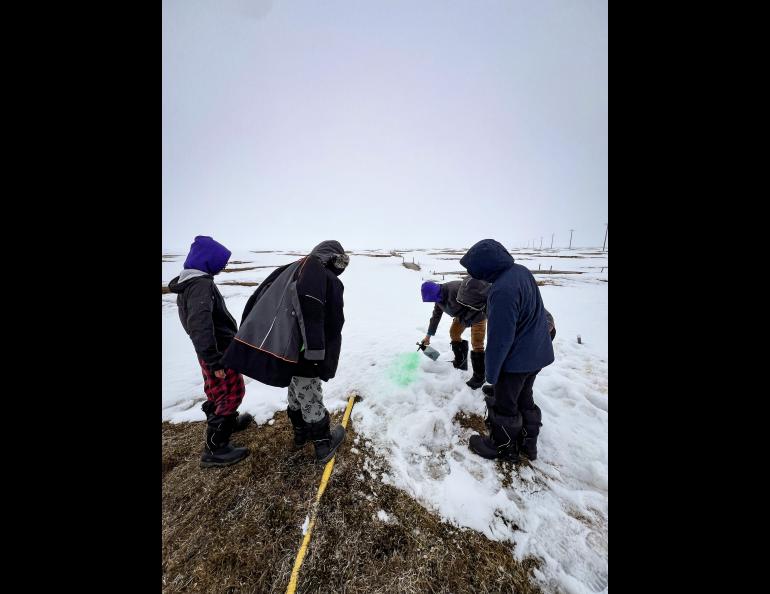

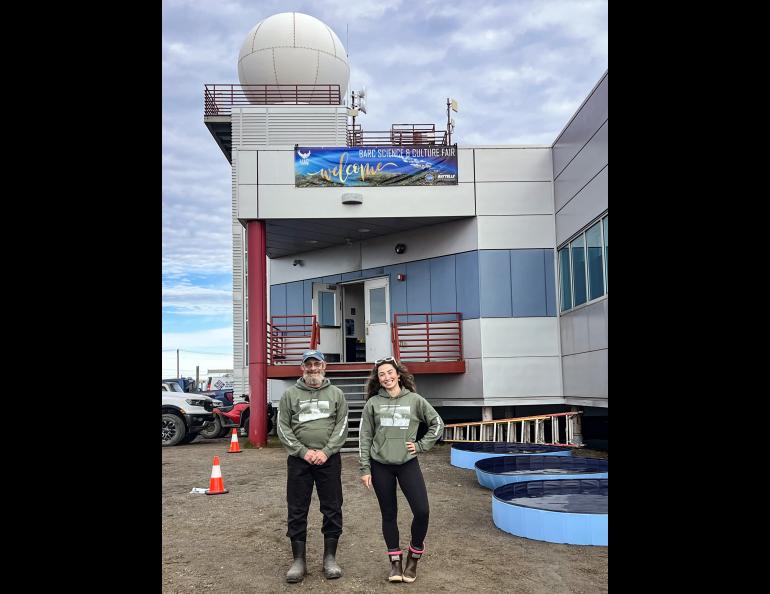
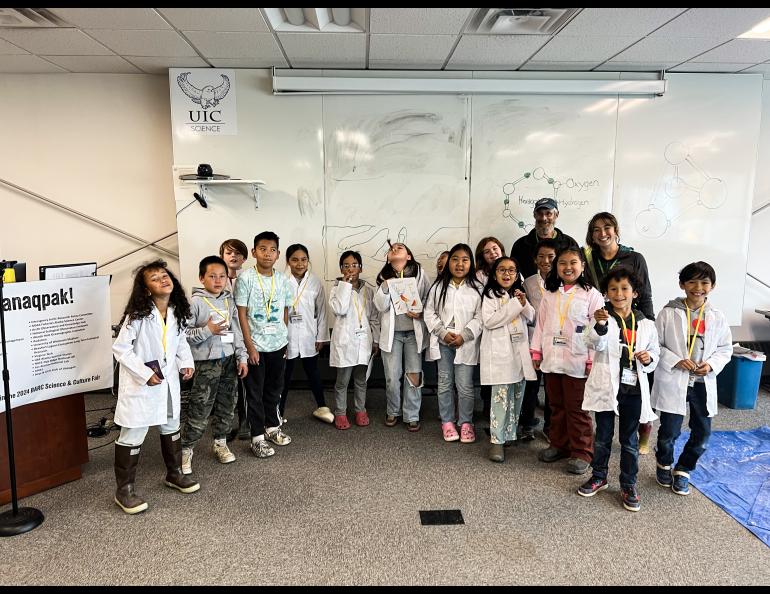
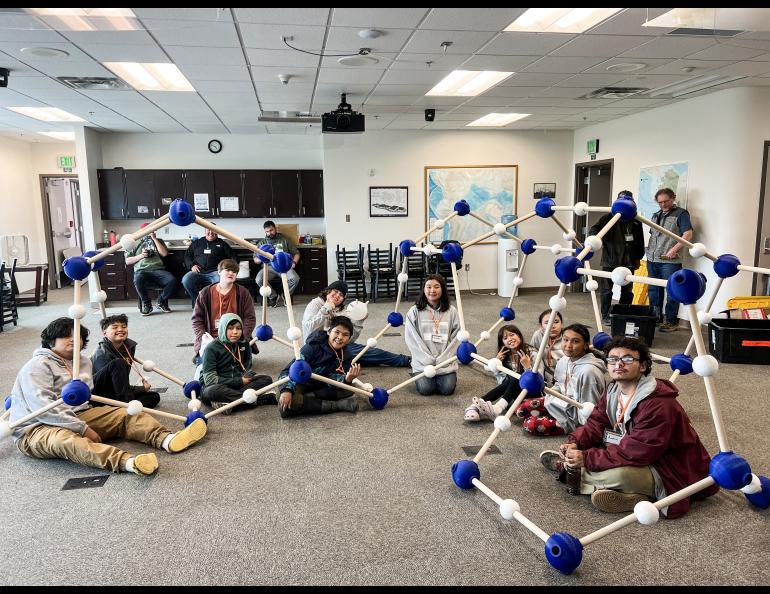
SALVO team connects with rural students in Utqiaġvik
The Snow Albedo Evolution, or SALVO, field campaign's third — and final — phase was completed this spring. The field campaign was conducted by researchers from the University of Alaska Fairbanks in Utqiaġvik, formerly Barrow, Alaska.
The SALVO field campaign tracks the spring-to-summer snowmelt transition on Arctic tundra and sea ice sites. SALVO aims to answer the research question: How does snowmelt drive the seasonal evolution of land and sea surface albedos in the Alaska high Arctic? It provides a deep dive into melting snow and its driving factors.
While spending time in Utqiaġvik, representatives from the team also had the opportunity to connect with rural high school students from across Alaska attending Ilisaġvik College’s Summer Camps.
Serina Wesen, education and outreach coordinator and SALVO Arctic field technician with the Geophysical Institute’s Snow, Ice and Permafrost Group, worked with the Community Environmental Monitoring Camp and the Allied Health Career Exploration Camp while monitoring the Arctic snowmelt in Utqiaġvik this spring and summer.
While in Utqiaġvik this spring, Wesen led two field trips to the Barrow Environmental Observatory (which is also one of the SALVO snowmelt study sites), sat on an environmental science career panel with students and led a discussion with high school students regarding the connection between snow, climate and environmental health.
“It was fascinating to see students from different regions of Alaska sharing their unique perspectives, allowing them to draw connections between contrasting landscapes, snow, and the environment,” she said.
This August, Wesen returned to Utqiaġvik, accompanied by snow geophysicist and Professor Matthew Sturm for the 2024 Barrow Arctic Research Center/Environmental Observatory Arctic Science and Culture Fair. This year’s 2024 BARC science fair theme was “Qiksiksrautiqaġniq Iñuuniaġvigmun,” or “Respect for Nature.”
They attended the fair to represent the Geophysical Institute’s Snow, Ice and Permafrost Group, facilitating multiple STEAM activities like "Paper Snowflakes and Permafrost Exploration" and "XL 3D Water Molecule and Avalanche Demonstration." These sessions aimed to inspire and educate students about the cryosphere, snowpack dynamics and snow's molecular structure.
While in Utqiaġvik, Sturm and Wesen distributed about 120 COSI Connects Snow-STEAM learning kits, produced as part of their NSF and NASA grants, to every Barrow student who attended.
“It has been very rewarding to work with students of all ages, K-12, in Utqiaġvik after spending so much time doing research and fieldwork here,” said Wesen. “These students often see people coming in and out of their community 'for science,' but they rarely know what is going on.
"It feels essential to use these opportunities to help them understand the environmental mechanisms we are monitoring, how our work helps us study changes in the Arctic and their home communities, and to connect with local, rural, and Indigenous students as a learning experience that might inspire them to pursue similar career pathways in the future.”
SALVO is supported by the U.S. Department of Energy Atmospheric System Research program and the Department of Energy Atmospheric Radiation Measurement user facility.
Serina Wesen, University of Alaska Fairbanks Geophysical Institute, smwesen@alaska.edu





